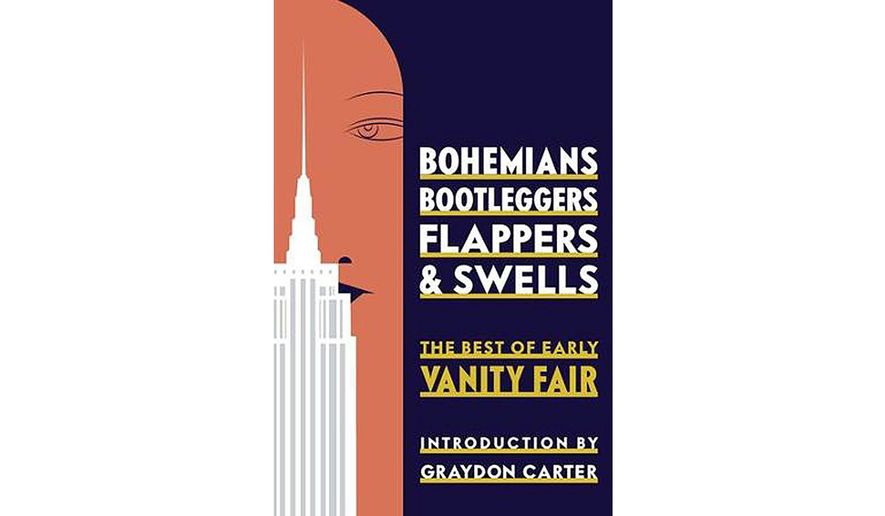OPINION:
Edited by Graydon Carter
The Penguin Press, $29.95, 420 pages
Vanity Fair magazine for the past three decades has loomed so large in the popular culture that there can be few literate people in this country who are unaware of its splashy celebrity profiles and splashier photographic portraits by Annie Leibovitz, not to ignore its penetrating reviews and cultural commentary. Few of its readers are aware that there was once another, quite different, magazine bearing the same name that flourished for less than a quarter-century, ceasing publication years before Graydon Carter, Vanity Fair’s present (and founding) editor, now in his mid-60s, was even born.
For all the differences between the two incarnations, it is clear from his enthusiastic introduction to this selection from the Vanity Fair that flourished from 1913 to 1936 that Graydon Carter is an admirer of what was “the bible for the smart set of its day” with “writing [that] pushed boundaries with its muscular and experimental prose” and writers such as Pablo Picasso and Babe Ruth who “took the pulse of the period — in real time — with an unrivaled sense of taste.” Indeed, Mr. Carter positively revels in the contrast:
“When the dreariness, the madness, and, oh, the sheer tackiness of modern life get to you, isn’t it tempting to imagine a different life in a different place and period?”
What more confidently gracious or more authoritative a tribute could there be than such a celebration and invitation to explore what is in these pages?
There is so much to savor, such as Thomas Mann on his love of going to the movies to Aldous Huxley pondering the nature of the modern and Bertrand Russell analyzing behaviorism. If this isn’t serious enough for you, there is John Maynard Keynes’ “Banks and the Collapse of Money Values” in January 1932, the year of banks failing across the United States. However, all this “high sentence,” as Chaucer termed it, is leavened by such lighter fare as P.G. Wodehouse’s satirical take exactly a century ago on physical culture (what we might call today exercising or working out) or Walter Winchell’s 1927 “A Primer of Broadway Slang.” There is Modernism’s high priestess Djuna Barnes’ 1922 profile of James Joyce, whose publication of “Ulysses” that year would catapult him to the movement’s apogee and his own. And then there’s Hugh Walpole’s “William Somerset Maugham: A Pen Portrait by a Friendly Hand,” published in 1920, exactly 10 years before Maugham’s 1930 novel “Cakes and Ale” with its own distinctly unfriendly, thinly disguised pen portrait skewering Walpole, from which he never recovered personally or professionally.
Not every prospect pleases in the pages of this book. Noel Coward’s contribution is poor stuff, juvenilia showing little of the brittle genius still to develop. The early poems of Dorothy Parker (here still styled by her real name, Dorothy Rothschild), who was very much at the center of Vanity Fair’s editorial magic circle, certainly show some of the sharp satirical qualities that she would continue to develop through much of her life. But it would be foolish to pretend that they display the hard gemlike flame of the definitive aphoristic verse that would become not merely her hallmark, but the very high bar to which so many would aspire and few if any even approach. Great poets graced the pages of the old Vanity Fair, but the poems by Edna St. Vincent Millay, while characteristic, are not her very best ones. But at least they are not as rebarbative as those by T.S. Eliot, one of whose contains gratuitously offensive — and just plain gratuitous — anti-Semitic lines, which I am confident today’s Vanity Fair would not print. However, dipsticks reveal the good, the bad and the ugly, and perhaps it’s just as well today’s readers can see just what could actually be acceptable back in 1923.
One omission from this otherwise commendable sampling is the journalist John Gunther, who contributed pieces to the Vanity Fair of yore that became part of his influential 1936 book “Inside Europe.” This first of the “Inside” series that would make Gunther’s name was one of the earliest wake-up calls to alert Americans to the threat of Adolf Hitler and the other figures beginning to dominate a Europe soon to drag the whole world to war. Gunther’s well-researched and vividly written essay on the fuhrer’s Oedipus complex can be found on the present Vanity Fair website. It is a pity that neither it nor any of his other pen-portraits of 1930s European movers and shakers is included in these pages packed with so many other mementos from that and the two previous decades.
• Martin Rubin is a writer and critic in Pasadena, California.




Please read our comment policy before commenting.